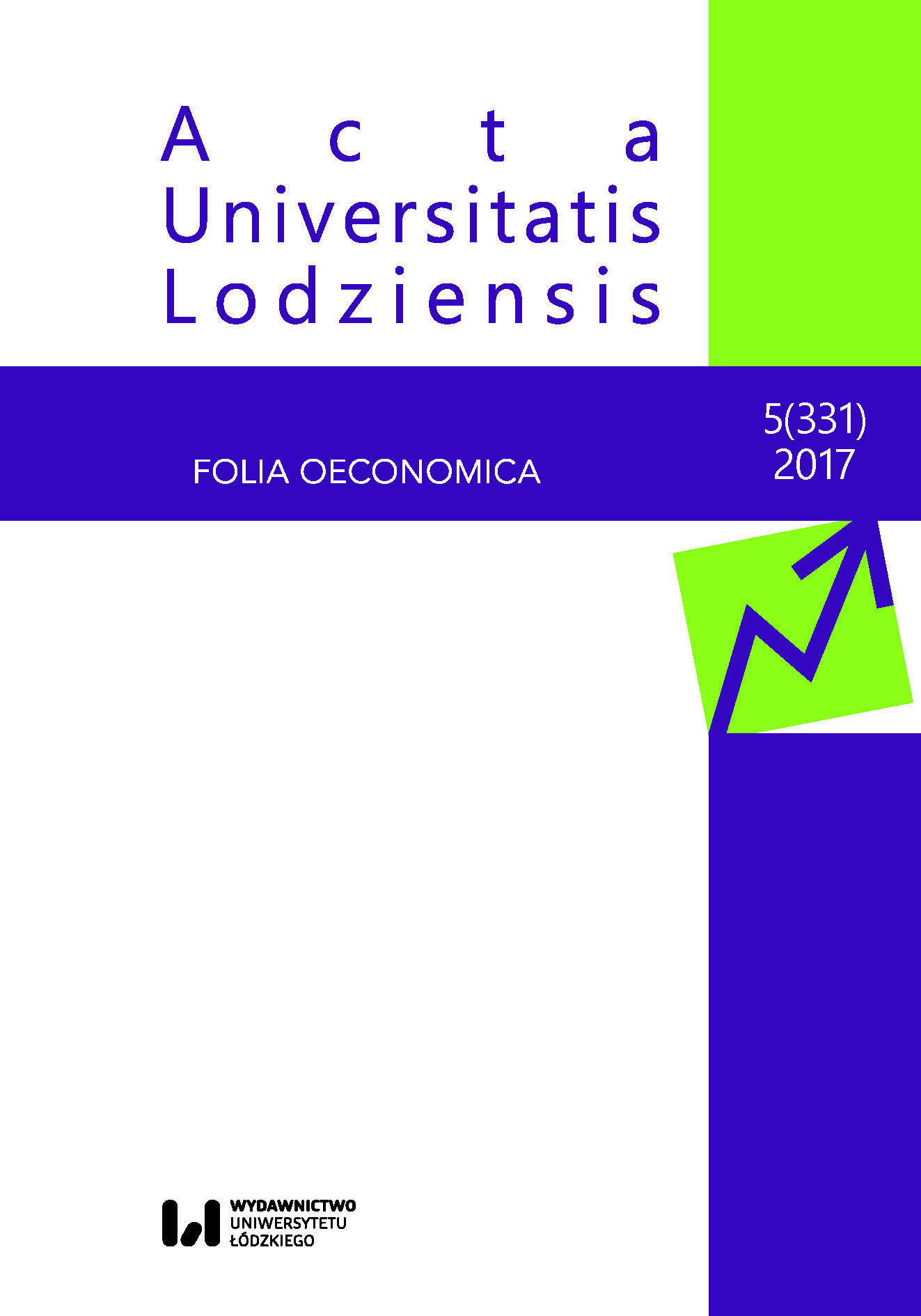Ocena zmian w nadumieralności mężczyzn w wieku 65 lat i więcej w okresie 1999–2013 w województwie łódzkim
An Assessment of Changes in Excess Mortality of Males Aged 65 and More in the Period 1999–2013 in the Lodz Region
Author(s): Beata Ciabiada, Paulina Paciej, Marek Bryła, Irena Maniecka‑BryłaSubject(s): Economy
Published by: Wydawnictwo Uniwersytetu Łódzkiego
Summary/Abstract: The paper aims to analyse the trends in mortality of men and women aged 65 and more in the Lodz region in the period 1999–2013, with particular emphasis on the phenomenon of excess male mortality. A complete database of deaths registered in the Lodz region in the period 1999–2013 (471.397) constituted our empirical material. Crude death rates among males and females were calculated. Standardization was carried out using the direct method. The European population was adopted as a standard. In addition, specific mortality rates according to the causes of death based on ICD–10 and the excess mortality rates were calculated. An analysis of time trends was performed with the use of join point models. Average annual percentage rates of changes were estimated. Our calculations enabled to identify the most important causes of death for people aged 65 and more in 2013. Among males the rates (per 10.000) were as follows: cardiovascular diseases (301.2), malignant neo¬plasms (160.2), diseases of the respiratory system (56.0), diseases of the digestive system (24.4) and ex¬ternal causes (19.4). A similar distribution of causes was observed among women, where the rates were as follows, respectively: 270.1; 82.9; 32.0; 19.6; 11.2. Compared to 1999, the largest decline in mortality rate, among both males and females, was observed for cardiovascular diseases. Excess mortality rate of males aged 65 and more reached the highest values (2.2–2.6) throughout the considered period in the age group 65–69 years, while the lowest (1.1–1.3) were observed in the interval of 85 years and more. The greatest rate of change (2.5% per year) was recorded in years 1999–2007 in the age group of 70–74 years. Despite the observed decline in mortality rates, excess mortality of men aged 65 and more did not change significantly over the period of 1999 to 2013, and principally was due to: malig¬nant neoplasms, diseases of the respiratory system and external causes. / Celem pracy jest analiza trendów umieralności mężczyzn i kobiet w wieku 65 lat i więcej w woj. łódzkim w latach 1999–2013, ze szczególnym uwzględnieniem zjawiska nadumieralności mężczyzn. Materiał badawczy stanowiła kompletna baza zgonów (471 397) odnotowanych w woj. łódzkim w latach 1999–2013. Obliczono rzeczywiste współczynniki zgonów wg płci. Standaryzację przeprowadzono metodą bezpośrednią. Jako standard przyjęto populację europejską. Ponadto obliczono współczynniki umieralności szczegółowej wg przyczyn zgonów w oparciu o ICD–10 i wskaźniki nadumieralności. Analizę trendów czasowych przeprowadzono za pomocą modeli join point. Oszacowane zostały średnioroczne procentowe tempa zmian. Obliczenia własne pozwoliły na określenie najważniejszych przyczyn zgonów wśród osób w wieku 65 lat i więcej w 2013 roku. W grupie mężczyzn były to (wskaźnik na 10 000): choroby układu krążenia (301,2), nowotwory złośliwe (160,2), choroby układu oddechowego (56,0), choroby układu trawiennego (24,4) i zewnętrzne przyczyny (19,4).Analogiczny rozkład przyczyn zaobserwowano wśród kobiet, gdzie współczynnik natężenia osiągał kolejno wartości: 270,1; 82,9; 32,0; 19,6; 11,2. W porównaniu z rokiem 1999 największy spadek natężenia zgonów, zarówno w grupie mężczyzn, jak i kobiet, odnotowano w odniesieniu do chorób układu krążenia. Wskaźnik nadumieralności mężczyzn powyżej 65. r.ż. w całym badanym okresie najwyższe wartości(2,2–2,6) osiągał w grupie wieku 65–69 lat, najniższe natomiast (1,1–1,3) w przedziale 85 lat i więcej. Największe tempo zmian (2,5% rocznie), odnotowano w latach 1999–2007 w grupie wieku 70–74 lata. Mimo obserwowanego spadku natężenia zgonów, nadumieralność mężczyzn w wieku 65 lat i więcej nie zmieniła się znacząco na przestrzeni lat 1999–2013 i była warunkowana w największym stopniu nowotworami złośliwymi, chorobami układu oddechowego i zewnętrznymi przyczynami.
Journal: Acta Universitatis Lodziensis. Folia Oeconomica
- Issue Year: 5/2017
- Issue No: 331
- Page Range: 39-50
- Page Count: 12
- Language: Polish

